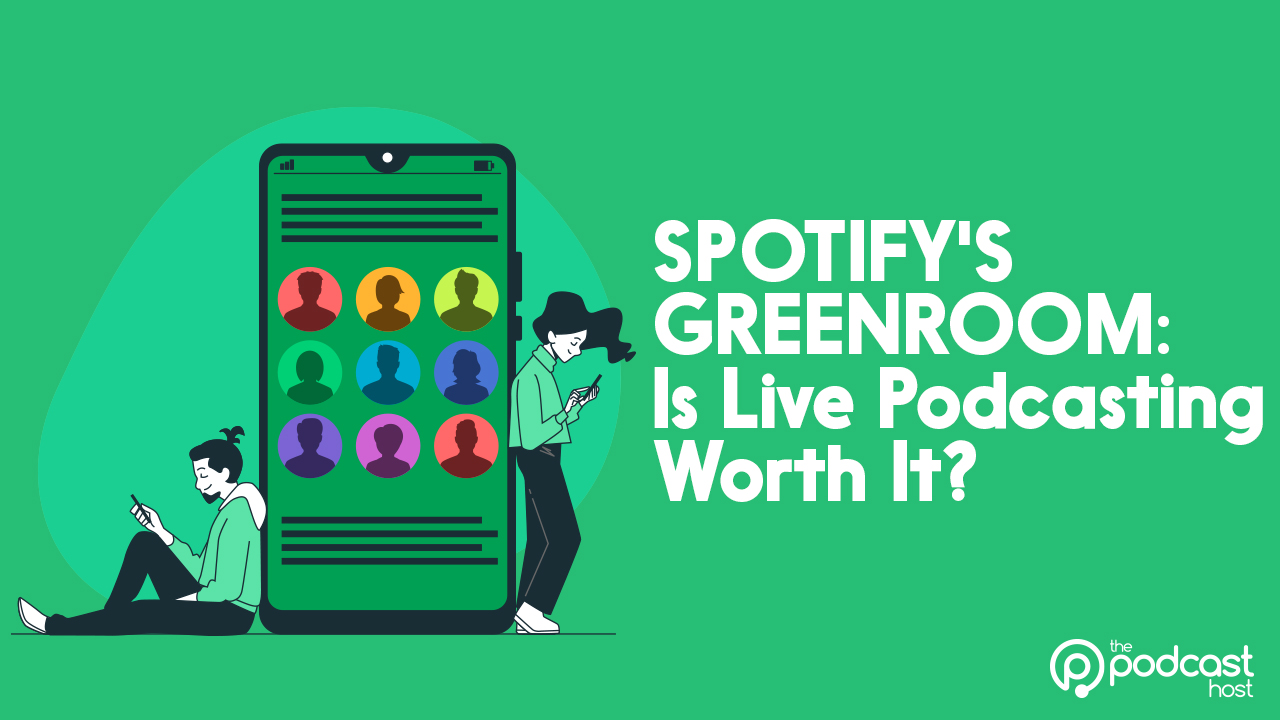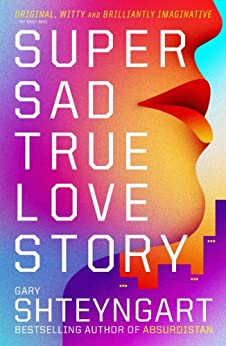Spotify’s Greenroom: Is Live Podcasting Worth It?

Spotify announced their new live audio feature, Greenroom, with a press release, but otherwise, little fanfare. Much like Clubhouse and Podbean Live, this tool helps Spotify users broadcast their voice to interested app users. Unlike Clubhouse (but like Podbean Live), creators can record their audio stream. Spotify’s brand cachet as a home for exclusive celebrity podcasts makes it seem easy to become a podcast superstar. But, is Spotify Greenroom (and social audio in general) a smart choice?
What’s new and unique about Spotify Greenroom?
Spotify says they’re “constantly iterating and innovating the future formats of audio.” They didn’t invent this tech, though. They acquired Betty Labs, and its audio chat product, Locker Room. Social audio has been happening on many different platforms. Facebook’s gradual move toward audio posts became live audio rooms and podcasts. In May, Twitter announced Twitter Spaces. Again, Podbean Live has been helping people record live podcasts for a while now. Spotify Greenroom isn’t new, unless Spotify is all you use.
How Does Greenroom Work?
Spotify didn’t announce their latest offering with a presentation that could show an example of how to use it. As Ashley Carman of The Verge reported, “the company is taking the opportunity to encourage people to sign up and figure out how they’ll want to use the app. Some of its core functionality, a person close to the situation says, will eventually make its way to the actual Spotify app, so the team will monitor what happens in Greenroom closely.” Spotify says, “The Greenroom offering will continue to evolve as we learn more about what creators and listeners want from their live audio experience.”
Let’s say Lamborghini puts the Aventador SVJ Roadster on sale in car dealerships. They issue a press release saying that it can drive from New York to Los Angeles in ten hours. But, before they modify any features, they wanted to see what people would do with the car after they bought it and drove it. This is a hyperbolic example of corporate irresponsibility. But, responsibility doesn’t seem to matter with social audio. After all, social media is a fun thing that helps us connect with others, right? It’s not dangerous, right?
So, how does Spotify Greenroom work? Apparently, the answer is, “sign up, press some buttons, and find out.”
What does Greenroom mean for listeners?
Good question. Spotify announced Spotify HiFi earlier this year. They said, saying, “Premium subscribers in select markets will be able to upgrade their sound quality to Spotify HiFi and listen to their favorite songs the way artists intended.” Unlike Apple’s lossless audio announcement, the press release doesn’t say anything about how much data the HiFi music files use, or any quantifiable specifics.
One could say, “Spotify has HiFi sound for music, and Greenroom for live audio.” But, this doesn’t mean that you can hear Spotify Greenroom in HiFi audio. Like any call recording app, if you use Spotify Greenroom with a good microphone, it’ll pick up and transmit your voice better than a bad one. The point of these social media apps is immediacy, not nuance in audio craft.
Should You Use Spotify Greenroom For Your Podcast?
If you love Clubhouse, and the majority of your existing audience consumes your podcast via Spotify, then it makes sense to use Spotify Greenroom. Certainly, these live audio apps are a convenient way to speak directly to your audience. But, the enduring popularity of podcasts has a lot more to do with quality than immediacy.
The ease and speed of broadcasting one’s voice out into the Internet for anyone to hear, gives me pause. It reminds me of the book, Super Sad True Love Story, by Gary Shteyngart. If you enjoyed Matthew’s article about digital minimalism, you’ll like this book.

In one scene, a streaming content creator gets the book’s protagonist really drunk in a bar, and makes him the object of his live content stream. The streamer goads the protagonist into confessing his love for a much-younger woman, who he met only very recently. The more the protagonist weeps and makes a drunken fool of himself, the more the streaming content creator’s “hits” rise. This pleases his sponsors. But, the protagonist achieves fame on a list of “101 People To Feel Sorry For.” Spoiler: things don’t go so well with the girl of his dreams. The desperation for attention far outweighs common sense.

Is Social Audio Good for Podcasters?
We already have a society where abrupt, too-candid social media posts garner tons of attention, while running careers. If you want to put your voice out into the aether for anyone to hear, why not make sure it’s the best possible version of you, first?
If you’re really good at speaking, project planning, and moderating discussions, then social audio can be good. It’s a way for you to listen to your audience and hear from them, directly. It can be a good promotional tool. But, there are better ways to craft quality content with a minimum of fuss.
Podcasting takes time, effort, and thought. Spotify Greenroom, and social audio in general, are really easy. They’re so easy, you don’t even have to think about what you’re going to say. Sometimes, a fast and unfiltered open connection is a good thing. But, it doesn’t necessarily make for an experience that audiences will share and repeat.
